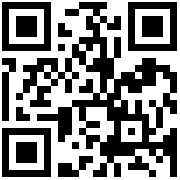Office Mob: +8615524105871
Office Tel: +86-024-31931990
Office Fax: +86-024-22845391
E-mail: info@eoexport.com
In recent years, with the increasing demand for broadband, because the performance of optical fiber is better than copper cable, it is widely used in the backbone construction of broadband projects. At the same time, because of the increasing coverage of optical fiber, the detection of optical fiber fault is becoming more and more important, to eliminate the failure of optical fiber components, what kind of method can be adopted? First of all, the elimination of optical fiber components of the fault, certainly need to pass the test, then the optical network testing At present, super Six types of cable manufacturers only understand that there are currently three kinds of instruments.
respectively: Optical loss test equipment (also known as optical multimeter or optical power meter), fault locator (fault tracker), fiber optic recognizer.
1, optical loss test equipment (by optical multimeter and optical power meter combination) Optical Power Meter: The relative loss of the optical power used to measure absolute optical power or through a section of fiber.
Optical multimeter: Used to measure the optical power loss of optical fiber links. In order to measure the loss of a cable link, it is necessary to emit the calibrated stabilized light at one end and read out the output power at the receiving end. Both of these devices constitute a light loss tester. When a light source and a power meter are synthesized into a set of instruments, it is often called a light loss tester (also known as a light multimeter).
When we measure the loss of a link, we need one person to operate the test light at the transmitter and the other at the receiving end to measure the loss in one direction. Usually, we need to measure the loss in two directions (because there is a connection loss or is due to the asymmetry of optical cable transmission loss). At this point, the technician must exchange the device and carry out another direction measurement. But what to do when they are more than 10 floors or tens meters apart? Obviously, if these two people each have a light source and a light power meter, then they can be measured on both sides, now for the certification test of the Advanced optical cable test sleeve machine can achieve two-way dual-wavelength test, such as: Fluke
Certifiber and DSP cable Test series of FTA cable test kits.
2, optical fiber fault locator (fault tracker) Most of the fault locator devices are hand-held instruments, suitable for multimode and single-mode optical fiber systems. Using OTDR (Optical time domain reflector) technique, it is used for the point location of optical fiber fault, and the test distance is mostly within 20 kilometers. The instrument directly displays the distance from the fault point to the number. Applies to: Wide area network (WAN), KM-wide communication systems, fiber to roadside (FTTC), Single-mode and multimode fiber optic cable installation and maintenance, and military systems. In single mode and multimode optical cable system, fault locator is an excellent tool to locate the connecting head with fault and the bad connection point.
The fault locator is simple to operate and can detect up to 7 multiple events with just one-click operation. The device is based on the laser diode visible light (red light) source, when optical injection of optical fiber, if the fiber fracture, connector failure, bending over, welding quality, such as the failure of the same, through the light emitted into the optical fiber can be a visual positioning of the fault. A visual fault locator is launched as a continuous wave (CW) or pulse mode. The typical frequency is 1Hz or 2Hz, but it can also work in the range of khz.
The output power is typically 0dBm (1Mw) or less, operating at a distance of 2 to 5km, and supports all universal connectors.
3. Fiber Optic recognizer It is a very sensitive photoelectric detector. When you bend a fiber, some light radiates from the core. The light will be detected by the optical fiber recognizer, which allows technicians to identify a single fiber in a multi-core optical cable or a connector board from another fiber. The optical fiber recognizer can detect the state and direction of light without affecting the transmission. To make this work simpler, the test signal is typically modulated to 270Hz, 1000Hz, or 2000Hz and injected into a specific fiber at the sender end.
Most fiber-optic recognizers are used for single mode fiber optic cables with a working wavelength of 1310nm or 1550nm, and the best fiber-optic recognizer is the use of macro-bending technology to identify optical cables and test the transmission direction and power of optical cables online. To sum up, the general large-scale use of optical fiber equipment projects are a large project, to complete a light loss measurement work or to eliminate the failure of optical equipment work, a calibrated light source and a standard optical power meter is indispensable.
Office Mob: +8615524105871
Office Tel: +86-024-31931990
Office Fax: +86-024-22845391
E-mail: info@eoexport.com
